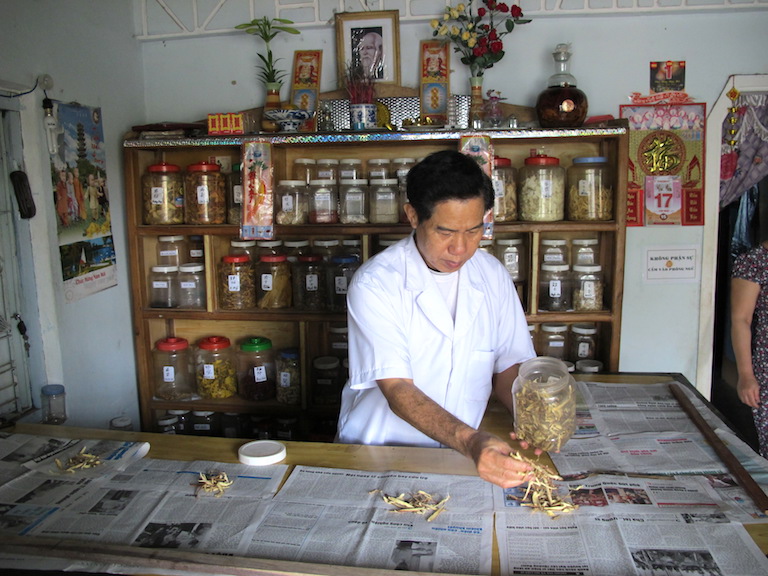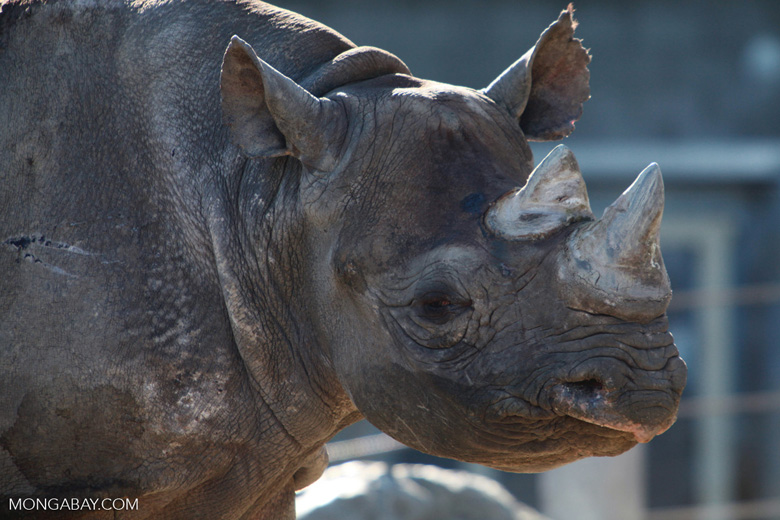- This piece is a commentary. The views expressed are the author’s own.
- The piece argues that Vietnam’s new wealth has brought great suffering for South Africa’s rhinos and the people who manage them.
- It concludes that while the government in Vietnam has started to crack down on illegal rhino horn shipments coming into ports and airports, the sustainable solution to the rhino-poaching crisis comes down to the ethics of the consumer.
Money brings many things. It can bring great happiness and it can cause great suffering.
It depends on how it is used. Ethics are important.
New prosperity following Vietnam’s accession to the World Trade Organization in 2007 has improved life for many in the country, but unfortunately Vietnam’s new wealth has brought great suffering for South Africa’s rhinos and the people who manage them.
Consumption of rhino horn (sung te giac) follows new pockets of wealth. Vietnam’s rising tiger economy put more money in the pockets of the growing middle class who have become the world’s biggest consumers of rhino horn.
Having lived in Vietnam for four years, my experience of the Vietnamese is as a deeply conservative and respectful people with a great appreciation for natural beauty. However, some interesting contradictions and tensions arise as a result of the utilitarian attitude toward wildlife that prevails in the country.

Whereas people had traditionally used rhino horn to reduce fevers and to treat poisoning, today’s consumers use it as a general health tonic, a hangover cure, a status symbol, or an expensive gift.
Governments generally also have a fairly utilitarian attitude toward wildlife. They aren’t very good at protecting the environment. It just doesn’t fit into their main concerns of preserving power and boosting economics. In fact, protecting the environment is the opposite of what most governments around the globe do.
I’m not criticizing governments. It’s just a fact that when you are looking after people, their needs come first. As populations grow and develop, governments take control of more and more land, pushing wildlife into smaller pockets.
Vietnam is a good example of a developing country that has come a long way in the past 20 years.
The Vietnam War and the economic sanctions that followed shackled the country’s growth. When I came to Vietnam in 2007 I heard stories from Vietnamese friends about the hardships and poverty they experienced when they were growing up.
Those years in the 1980s and ’90s were tough economic times.
One of my friends described losing two siblings to illness during her childhood in the central highlands city of Dalat. Her family believed the wind had made the children sick. Living on a shoestring, the family struggled to meet even its most basic needs. They relied on folk medicine.
Thirty years later my friend enjoys a better quality of life. She and her brother work in well-paying jobs in the NGO sector and tobacco industry. When she is sick she goes to a mix of modern and traditional doctors. Neither are particularly cheap, but they’re affordable.
Vietnam is enjoying more prosperity.

Another friend of mine told me his grandparents in the central coastal city of Danang owned a rhino horn for fifty years. They used it in the traditional way, grinding it into a powder and mixing it with water to drink in conjunction with other herbs to treat fever. When they died recently, only two inches of the horn’s base remained.
His grandparents left the horn to his aunt, who lives in the U.S. When she came over for the funeral she picked up the horn and took it back to the U.S. with her.
Because my friend’s grandparents bought that horn sometime in the 1960s, it might have come from a Javan rhino (Rhinoceros sondaicus) living in Vietnam at the time. (The species now is extinct in Vietnam and numbers only 60 individuals, in Indonesia.) Or it could have come from Africa through a Chinese dealer in Vietnam.
Back then, rhinos were more common in Africa than they are now. There were over a hundred thousand of them, most of them black rhinos (Diceros bicornis).
But between the 1960s and the 1990s the black rhinos were decimated by the tens of thousands, wiped from many African countries completely to feed demand for their horns in China for Traditional Chinese Medicine (TCM).
International efforts stopped the killing before it was too late to save the black rhino. The Chinese government cracked down on demand because of international pressure and a desire to be seen doing the right thing on the global stage. South Africa started a groundbreaking conservation project to translocate both black and southern white rhinos (Ceratotherium simum simum) to every corner of the country.
Meanwhile, South Africa was also investing seriously and deploying innovative conservation measures in bringing southern white rhinos back from the brink of extinction, the subspecies having numbered just 50 animals at the end of the 19th century due to rampant colonial hunting.

Today, about 5,000 black rhinos remain in various parts of the continent. And southern white rhinos have recovered to 20,000 animals, most of them in South Africa. The other white rhino subspecies, the northern white rhino (C. simum cottoni), appears to be extinct in the wild.
However, globalization has forged links between the rich and the very poor. Middle-class rhino horn consumers from Vietnam are now indirectly exploiting the poorest people in the villages and townships of South Africa and Mozambique to illegally hunt rhinos in South Africa.
Motivated by the promise of a full year’s honest wages for a few days poaching, these poor hunters risk long jail sentences or even being shot to hunt rhinos for illegal Vietnamese poaching and smuggling syndicates.
Like Vietnam, South Africa is recovering from colonialism. South Africa’s economy relies on wildlife tourism. The game industry is suffering from the rhino horn trade. Attempts to stop the poaching are costing the South African government a fortune.
On top of the financial cost, the damage to South African society is horrible, as I described in my story this summer for Mongabay. No one in the game industry trusts anyone anymore. While on the outside everything looks normal, corruption is suspected everywhere. Private and government game stewards alike, frightened for their families, decline to speak out against the rhino horn syndicates. Livelihoods and lives are threatened.
Greed and money have taken over.
While the government in Vietnam has started to crack down on illegal rhino horn shipments coming into ports and airports, the sustainable solution comes down to the ethics of the consumer.
My friend, with the grandparents who owned a horn, is a modern, middle-class finance worker who travels the world. He believes strongly in the efficacy of traditional medicine and, like his grandparents, in the medical efficacy of rhino horn. He asked me: if a medicine works and it could help someone, wouldn’t I agree to its use? No, it’s unethical, I said.
Because rhinos are endangered?
Yes, and because of the harm it’s causing the people of South Africa and the individual animals, I said.
Ethics is about reducing harm. Buying rhino horn may bring some perceived benefit to people, but it’s causing a lot more harm than any good it might be doing.